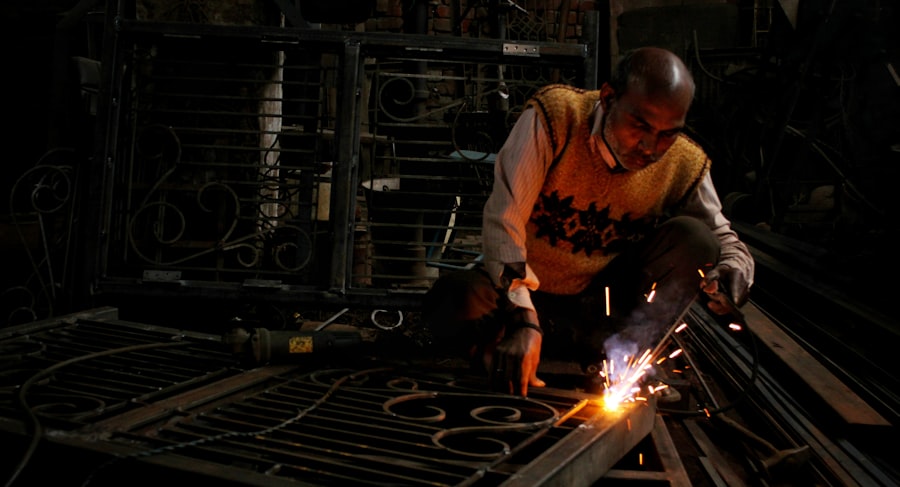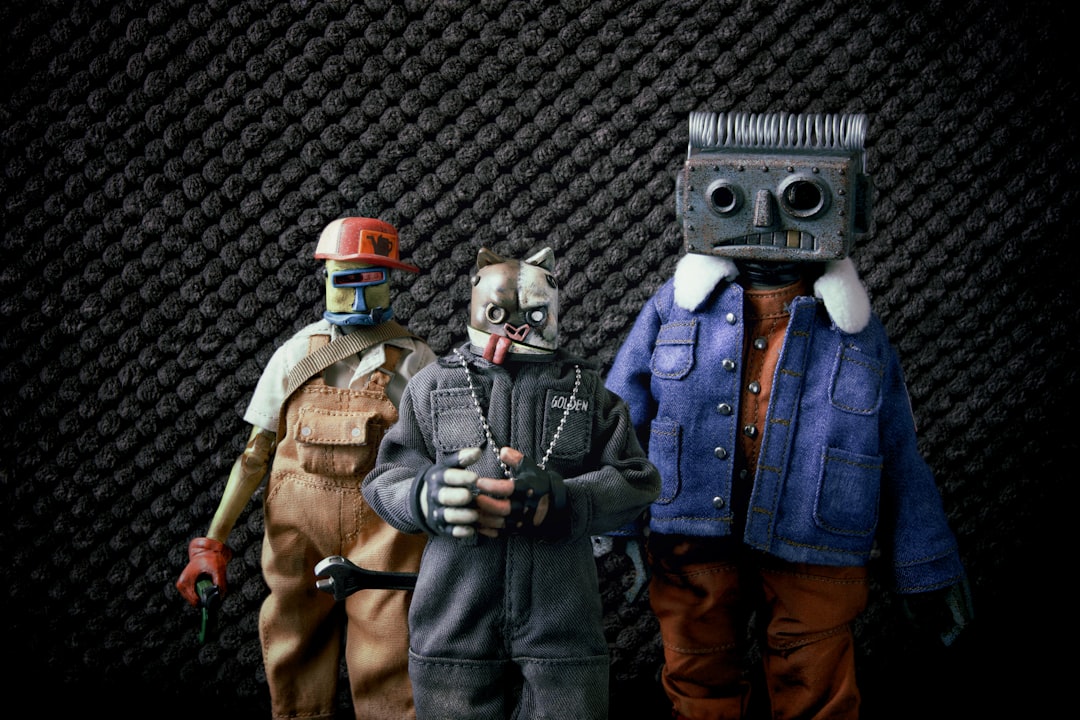As you navigate through the rapidly evolving landscape of the modern workforce, it becomes increasingly evident that artificial intelligence (AI) is reshaping the way we work. The integration of AI technologies into various sectors has sparked a significant transformation, leading to both excitement and apprehension among employees and employers alike. While AI promises enhanced efficiency and productivity, it also raises concerns about job displacement and the future of work.
You may find yourself pondering how these advancements will affect your career and the job market as a whole. The rise of AI is not merely a trend; it represents a fundamental shift in how tasks are performed across industries. From automating repetitive tasks to analyzing vast amounts of data, AI systems are designed to augment human capabilities and streamline operations.
However, this technological revolution also poses challenges, particularly for those in roles that are susceptible to automation. As you consider the implications of AI on your profession, it is essential to understand which jobs are most at risk and how you can adapt to this changing environment.
Key Takeaways
- AI is increasingly taking over jobs across various industries, leading to concerns about unemployment and job displacement.
- Jobs in manufacturing and assembly are being automated by AI, leading to a decrease in the demand for human labor in these roles.
- Customer service and support roles are being impacted by AI, with chatbots and virtual assistants taking over routine tasks and interactions with customers.
- Transportation and delivery services are being revolutionized by AI, with the development of autonomous vehicles and drones potentially replacing human drivers and delivery personnel.
- Data entry and administrative tasks are being automated by AI, reducing the need for human workers to perform these repetitive and time-consuming duties.
Jobs in manufacturing and assembly
In the realm of manufacturing and assembly, AI has made significant inroads, fundamentally altering the way products are created and assembled. You may have noticed that many factories are now equipped with robotic arms and automated systems that can perform tasks with precision and speed far beyond human capabilities. These machines can handle everything from welding to painting, reducing the need for manual labor in many areas.
As a result, traditional manufacturing jobs are increasingly being replaced by automated processes, leading to a decline in available positions for workers. However, while some roles may be disappearing, new opportunities are emerging within this sector. As you explore the landscape of manufacturing, you might find that there is a growing demand for skilled workers who can operate and maintain these advanced machines.
Customer service and support roles

Customer service and support roles have also been significantly impacted by the rise of AI technologies. You may have encountered chatbots or virtual assistants while seeking assistance from various companies. These AI-driven tools are designed to handle routine inquiries, provide information, and even resolve issues without human intervention.
As a result, many organizations are streamlining their customer service operations, leading to a reduction in the number of traditional support roles. While this shift may seem daunting, it also presents an opportunity for you to enhance your skill set. As AI takes over basic customer interactions, there is an increasing demand for human employees who can handle more complex issues that require empathy, critical thinking, and nuanced communication.
By focusing on developing these interpersonal skills, you can position yourself as an invaluable asset in a customer service landscape that is evolving to prioritize personalized experiences over automated responses.
Transportation and delivery services
| Service | Metrics |
|---|---|
| On-time delivery | 95% |
| Customer satisfaction | 4.5/5 |
| Delivery time | 2-3 days |
| Number of vehicles | 100 |
The transportation and delivery services sector is undergoing a profound transformation due to advancements in AI and automation. You may have noticed the rise of self-driving vehicles and drones that promise to revolutionize how goods are transported and delivered. Companies are investing heavily in these technologies to improve efficiency and reduce costs, which could lead to significant changes in job availability within this field.
While the prospect of autonomous vehicles may raise concerns about job security for drivers, it is essential to recognize that new roles will emerge alongside these advancements. For instance, as self-driving technology becomes more prevalent, there will be a need for professionals who can oversee operations, ensure safety protocols are followed, and manage logistics. Additionally, as delivery services become more reliant on technology, there will be opportunities for individuals skilled in data analysis and route optimization.
Embracing these changes can help you stay ahead in a rapidly evolving industry.
Data entry and administrative tasks
Data entry and administrative tasks have long been considered routine jobs that require minimal skill. However, with the advent of AI technologies capable of processing vast amounts of information quickly and accurately, these roles are increasingly at risk of being automated. You may find that many organizations are turning to AI-driven software to handle data entry tasks, reducing the need for human intervention in these areas.
Despite the potential for job displacement, there is still a silver lining for those willing to adapt. As AI takes over mundane data entry tasks, there will be a growing demand for individuals who can analyze and interpret the data generated by these systems. Your ability to extract insights from complex datasets will become increasingly valuable as organizations seek to leverage data for strategic decision-making.
By focusing on developing analytical skills and embracing technology, you can position yourself for success in an evolving job market.
Medical diagnostics and analysis

The healthcare industry is experiencing a significant transformation due to the integration of AI technologies in medical diagnostics and analysis. You may have heard about AI algorithms that can analyze medical images with remarkable accuracy or predict patient outcomes based on historical data. These advancements have the potential to enhance diagnostic capabilities and improve patient care while also raising questions about the future of certain medical roles.
While some may fear that AI will replace healthcare professionals, it is essential to recognize that these technologies are designed to augment human expertise rather than replace it entirely. As a healthcare worker, you may find that your role evolves to focus more on patient interaction, empathy, and complex decision-making while relying on AI tools for data analysis and diagnostic support. Embracing this collaboration between humans and machines can lead to improved patient outcomes and a more fulfilling career in healthcare.
Financial analysis and investment management
In the world of finance, AI is revolutionizing how investment decisions are made and how financial analysis is conducted. You may have noticed that many financial institutions are leveraging machine learning algorithms to analyze market trends, assess risks, and make investment recommendations with unprecedented speed and accuracy. This shift has led to concerns about job displacement among financial analysts and investment managers.
However, while some traditional roles may be at risk, new opportunities are emerging within the finance sector as well. As AI takes over routine analysis tasks, there will be an increasing demand for professionals who can interpret complex data sets, develop investment strategies, and provide personalized financial advice. Your ability to combine financial acumen with technological proficiency will be crucial in navigating this evolving landscape.
By staying informed about industry trends and continuously enhancing your skills, you can position yourself as a valuable asset in the finance world.
Legal research and document review
The legal profession is not immune to the impact of AI technologies either. You may have observed that many law firms are adopting AI-driven tools for legal research and document review processes. These systems can quickly analyze vast amounts of legal documents, identify relevant case law, and streamline the review process—tasks that once required significant time and effort from legal professionals.
While this automation may raise concerns about job security for paralegals and junior attorneys, it also presents an opportunity for you to focus on higher-level legal work that requires critical thinking and strategic analysis. As routine tasks become automated, your role may shift toward providing legal counsel, negotiating contracts, or representing clients in court—areas where human judgment and expertise remain irreplaceable. By embracing technology as a tool rather than a threat, you can enhance your value within the legal field.
Creative and design roles
The creative industries are also feeling the effects of AI’s rise. You might have noticed AI-generated art or music gaining popularity in recent years. While these advancements showcase the potential of technology to create compelling content, they also raise questions about the future of creative jobs such as graphic design, writing, or music composition.
As AI tools become more sophisticated at generating creative outputs, you may wonder how they will impact your own work. Despite these challenges, there remains a strong demand for human creativity and originality that machines cannot replicate. Your unique perspective, emotional intelligence, and ability to connect with audiences on a personal level will continue to be invaluable assets in creative fields.
Rather than viewing AI as competition, consider it an opportunity to enhance your creative process—using technology as a tool to inspire new ideas or streamline workflows while maintaining your distinct artistic voice.
Agriculture and farming
The agricultural sector is undergoing a significant transformation due to advancements in AI technologies aimed at improving efficiency and sustainability. You may have heard about precision farming techniques that utilize data analytics and machine learning algorithms to optimize crop yields while minimizing resource usage. These innovations promise to revolutionize how food is produced but also raise questions about the future of agricultural jobs.
While some traditional farming roles may be at risk due to automation, new opportunities are emerging within this sector as well. As agriculture becomes increasingly reliant on technology, there will be a growing demand for individuals skilled in data analysis, drone operation, and machine maintenance. By embracing these changes and acquiring new skills relevant to modern farming practices, you can position yourself for success in an industry that is evolving rapidly.
Education and tutoring roles
The education sector is also experiencing significant changes due to the integration of AI technologies into teaching and learning processes. You may have encountered online learning platforms that utilize adaptive learning algorithms to personalize educational experiences for students based on their individual needs. While these advancements offer exciting possibilities for enhancing education delivery, they also raise concerns about the future of traditional teaching roles.
However, rather than viewing AI as a threat to educators, consider how it can complement your teaching methods. As technology takes over administrative tasks or provides personalized learning experiences for students, your role as an educator may shift toward fostering critical thinking skills, creativity, and social-emotional development—areas where human interaction remains essential. By embracing technology as an ally rather than an adversary in education, you can enhance your effectiveness as an educator while preparing students for success in an increasingly digital world.
In conclusion, while the rise of AI presents challenges across various sectors by automating certain jobs traditionally held by humans, it also opens up new opportunities for those willing to adapt and evolve alongside these technological advancements. By focusing on developing skills that complement AI capabilities—such as critical thinking, creativity, emotional intelligence—and embracing lifelong learning practices—you can position yourself for success in an ever-changing job market shaped by artificial intelligence.
In recent years, the rapid advancement of artificial intelligence has sparked significant discussions about its impact on the job market, particularly concerning the replacement of human jobs. An insightful article on this topic can be found on How Wealth Grows, which delves into various examples of AI taking over roles traditionally held by humans. The article explores sectors such as manufacturing, customer service, and even creative industries, highlighting both the challenges and opportunities presented by this technological shift. For a deeper understanding of how AI is reshaping the workforce, you can read the full article by visiting this link.
FAQs
What is AI?
AI, or artificial intelligence, refers to the simulation of human intelligence in machines that are programmed to think and act like humans. This includes tasks such as learning, problem-solving, and decision-making.
How is AI replacing human jobs?
AI is replacing human jobs in various industries by automating repetitive tasks, analyzing data more efficiently, and performing complex calculations. This has led to the displacement of certain roles, particularly those that are routine and predictable.
What are some examples of AI replacing human jobs?
Examples of AI replacing human jobs include automated customer service chatbots, robotic process automation in manufacturing, AI-powered data analysis in finance, and autonomous vehicles replacing truck drivers.
What are the potential impacts of AI replacing human jobs?
The potential impacts of AI replacing human jobs include job displacement, the need for retraining and upskilling of workers, and the creation of new job opportunities in AI-related fields. It also raises concerns about income inequality and the ethical implications of AI in the workforce.
How can society adapt to AI replacing human jobs?
Society can adapt to AI replacing human jobs by investing in education and training programs for workers to acquire new skills, promoting the responsible use of AI in the workforce, and implementing policies to support workers affected by job displacement. Additionally, fostering innovation and entrepreneurship in AI-related industries can create new job opportunities.
